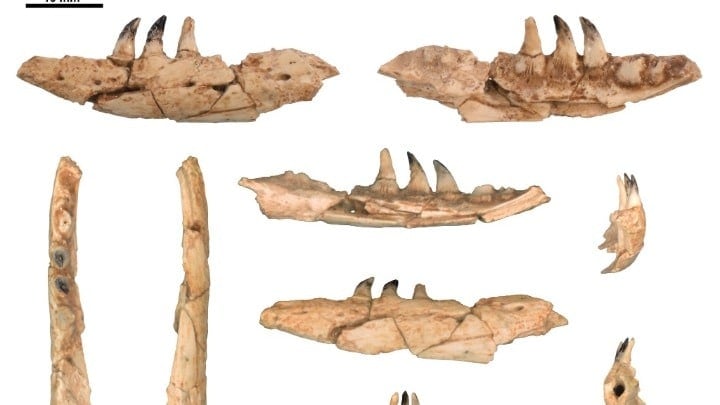
Unique conditions within the sediments prevented the bones from being fully destroyed. Credit: AMNA
Fossil evidence confirms that a gigantic reptile, a monitor lizard similar to the modern Komodo Dragon, lived approximately four million years ago in the area of Megalo Embolo near Thessaloniki.
This significant paleontological discovery and identification were made as part of a recent study by postgraduate student Hara Drakopoulou, whose work was supervised by a team of experts, including George Lazaridis of the Aristotle University of Thessaloniki.
Thessaloniki’s Komodo Dragon relative: A first for the region
The site has been under systematic investigation by the AUTh Geology Department for decades. Credit: AMNA
“This is the first presence of this species for this specific location and this particular time period,” noted Lazaridis, speaking to the Athens-Macedonian News Agency.
Lazaridis explained that the Megalo Embolo site has been under systematic investigation by the AUTh Geology Department for decades, yielding numerous fossils now housed in the department’s museum. The site is especially rare because its findings date back to the Pliocene geological epoch, specifically ranging from 4.2 to 3.2 million years ago, representing a unique snapshot of ancient fauna.
Drakopoulou’s postgraduate thesis successfully identified the fossils that Lazaridis had initially unearthed a decade ago. The importance of the find lies in the excellent preservation of the reptile bones and the fact that it is the first recorded instance of this type of giant monitor lizard in Megalo Embolo.
Evidence of a different climate
The findings date back to the Pliocene geological epoch, specifically ranging from 4.2 to 3.2 million years ago. Credit: AMNA
According to Lazaridis, the concentration of well-preserved fossils at Megalo Embolo suggests that unique conditions within the sediments prevented the bones from being fully destroyed.
The ongoing scientific excavation, supervised by Professor Kostopoulos, has unearthed a diverse collection of fossils from the area, including:
Numerous other reptiles, such as giant tortoises and snakes.
Mammals, including primitive forms of horses (Hipparion).
Carnivores, mastodons, and rhinoceroses—species that are now extinct in the Greek region.
“These animals live in completely different climates today, which indicates that the climate at that time was entirely different, likely warmer and with different environmental conditions,” Lazaridis concluded, emphasizing the site’s value in reconstructing Greece’s deep history.
Related: Crocodiles, Cobras, Giant Lizards Once Inhabited Greece’


